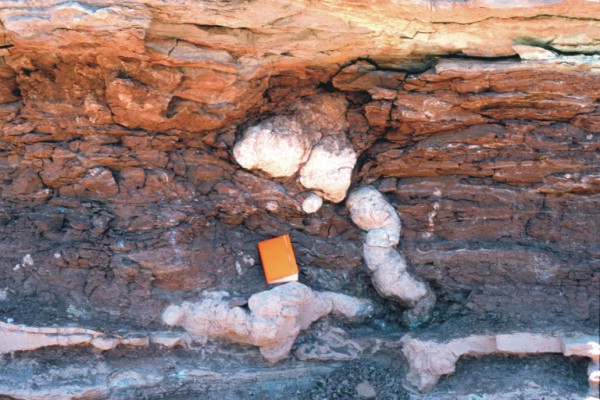What first law? Of thermodynamics?In light of The First Law, how do you account for all the carbon removed the cycle. What replaces the carbon that was in the cycle, but now is
trapped under 1000's of feet of soil, and removed from the cycle (carbon
sink). There had to of been a huge C12 drop in the cycle when these strata
were deposited. Same applies for limestone (calcium carbonate).
The carbon did not get replaced.
And that's actually quite a problem for catastrophism. The earth couldn't possibly have held all the bio mass that now constitutes the coal and oil deposits which according to the flood model all were formed by the flood at once. There is much more coal and oil than there is alive bio mass today - according to the flood model all that stuff should have been alive right before the flood, which is pretty much impossible.
The earth contains enough oil to cover the entire surface in about 68cm of it. And a cubic metre of wood won't give you a cubic metre of oil...you need more wood than that, much more.
And what does that have to do with the ratio of C12 to C14 in the atmosphere anyway?
You're contradicting yourself there.Limestone forms either by direct crystallization from water (usually seawater)
or by accumulation of shell and shell fragments. In the first case, it carries
a record of the chemical composition of seawater and it provides evidence of
how that composition has changed with time. Limestone usually forms in
shallow water less than 20 m (70 ft) deep and thus also provides important
geological information on the variation in sea level in the past.
All limestone forms from the precipitation of calcium carbonate from water.
Calcium carbonate leaves solutions in many ways and each way produces a
different kind of limestone. All the different ways can be classified into two
major groups: either with or without the aid of a living organism.
However, in case of the dover cliffs it's limestone which was formed from shell fragments of small organisms. That takes time. Lots of time. The other method wouldn't be able to account for it in the required timeframe either though (not that it matters in any way, as the composition is perfectly clear, it's shell limestone).
Wait a second...they were taken from the "sample bank" of some university, i.e. not gathered in the expectation of being tested for C14 and accordingly stored in an inert gas? I.e. they were exposed to air? Bummer... they were contaminated with C14 from the air (which is very significant for samples with this little C14), and similar time of exposure of course accounts for similar amounts of C14.The researchers were aware of this possibility, so the first set of samples
consisted of ten coals obtained from the U. S. Department of Energy Coal
Sample Bank maintained at the Pennsylvania State University. The ten
samples include three coals from the Eocene part of the geological record,
three from the Cretaceous, and four from the Pennsylvanian. Are you saying
all three strata were surrounded by these very close levels of radioactivity
even though their separated by hundreds and thousands of meters? The
correlations are remarkably tight.
And don't you find it interesting that they contained only 0.2% of the natural amount of C14? There should be about 50% in it if they had formed less than 5000 years ago.
Plate tectonics. climate changes.And the Permian Strata? These are marine organisms.
Also, the majority of the plants in the Pennsylvanian strata are tropical.
No one denies local catastrophes, and a frequent change from land being dry and covered by water of seas or even oceans is part of the standard model, it's fully explained.And
how do you explain: the inclusion of numerous marine fossils such as fish,
molluscs, brachiopods, tubeworms, upright tree trunks which often
penetrate tens of feet perpendicular to stratification....
The Pennsylvanian strata as a whole reflects catastrophism versus
uniformity.
However, upright trees are an interesting issue. sSometimes they are found with roots intact and firmly embedded into the underlying soil, which means that they grew in the place where they were found.
We should not find any such fossils in the strata which supposedly were laid down by the flood - but we do.
And besides...what were the animals which dug these burrows thinking?

Huge image:
http://gondwanaresearch.com/hp/Jr_Morrison_vert-1.jpg
They are in jurassic strata - including the exits.
http://gondwanaresearch.com/hp/paleosol.htm
I think that's the case right now.Evidence of an old world that stands up to scrutiny and an Old World
geologic model that makes more sense than The Flood model. Sorry, the
first time you asked, I thought it was a rhetorical question.
However, independent from positive evidence for an old earth, what negative evidence could falsify a flood or a young earth? Is there something specific that could be found that you would accept as a falsification of the flood, just as e.g. bunny bones in undisturbed precambrian strata would falsify evolution?








